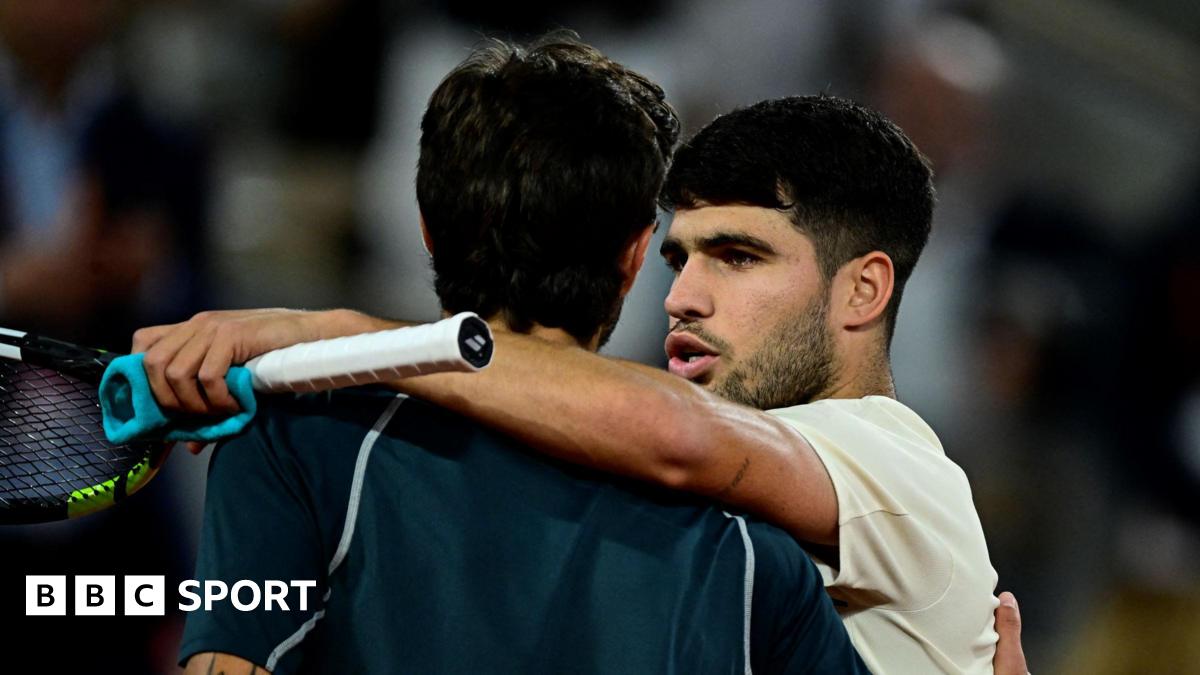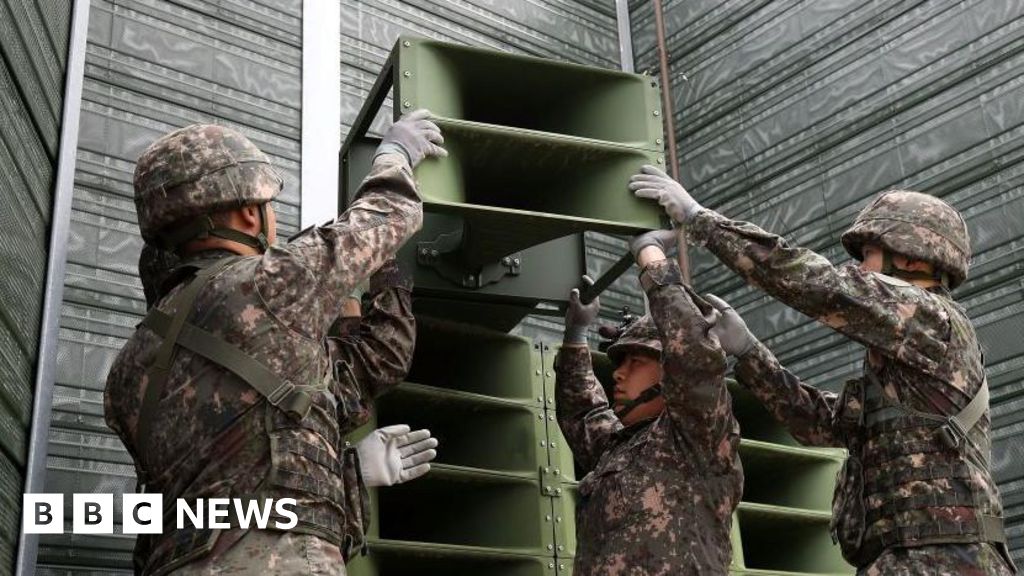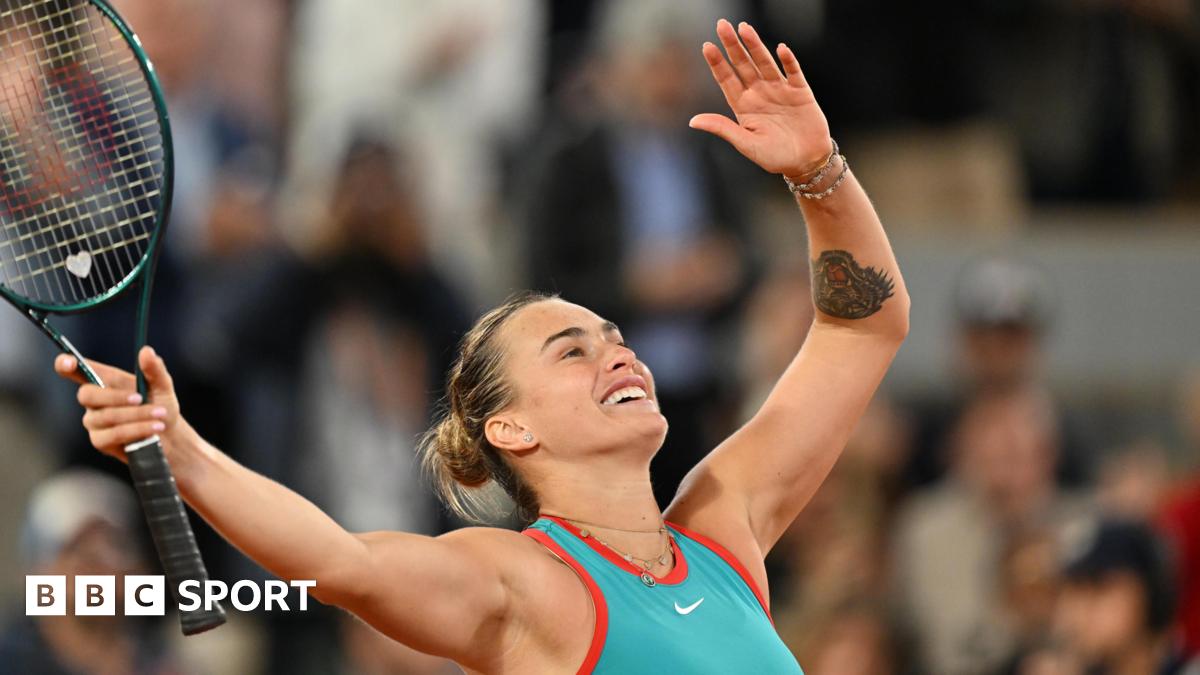
Zach KramMay 27, 2025, 08:00 AM ET
With just under six minutes remaining in Sunday's Game 3 of the Eastern Conference finals, the New York Knicks tried a new defensive tactic.
The Knicks typically set up their base defense deep in their own end, and to that point in the series, they had never sent more than one player to apply more than light pressure after a made free throw. But after Karl-Anthony Towns sank a freebie late in a must-win game, with his team clinging to a 91-90 lead after a surprising comeback, the Knicks sent not one, not two, but three different defenders to the backcourt to add pressure on the ball.
First, Miles McBride and Mikal Bridges double-teamed Tyrese Haliburton, forcing the inbounds pass to Pascal Siakam instead of the Indiana Pacers' potent point guard. Then OG Anunoby picked up Siakam early, leading to a trap and nearly a steal at midcourt.
Finally, with about half the shot clock already gone, the Pacers got into their offense with a lazy pick-and-roll. But the Knicks switched, and the ball didn't enter inside the 3-point line until the Pacers had seven seconds to shoot. All Siakam could do as the shot clock wound down was jab step and force a contested midrange jumper -- one of the sport's least efficient shots.
The Knicks used more ball pressure in the fourth quarter of Game 3 than any previous stretch of the conference finals. Here, they deny Haliburton and force a stagnant Pacers play on a crucial possession. pic.twitter.com/92piitqKqy
— Zach Kram (@zachkram) May 26, 2025The Knicks had forced a stagnant possession and successfully staved off a Pacers scoring chance. Haliburton never touched the ball. And on the next play, Towns hit a 3-pointer to widen New York's lead and close out the Pacers 106-100 to notch their first win in the series.
Ball pressure -- who engages it, where it is initiated and when teams decide to change it -- is the hidden story of the 2025 conference finals. By itself, ball pressure doesn't show up on the scoreboard or in the box score, but it affects every possession, alters offensive strategies and swings games.
When controlling for how a possession begins -- because teams are more likely to be able to set up early pressure after an inbounds pass than after a live rebound, for instance -- the NBA as a whole has a 109 offensive rating when it faces backcourt pressure in these playoffs, as compared to a 111 offensive rating with no backcourt pressure. That's not a major difference.
But every point counts in close playoff games, and there's plenty more team-to-team variation. Some teams thrive when applying more pressure on their opponents. In last year's East semifinals, the Pacers pressured New York's Jalen Brunson more than any other team pressured any other ball handler. Second on that leaderboard was the Minnesota Timberwolves against the Denver Nuggets' Jamal Murray in the Western Conference semifinals; third was the Timberwolves against Reggie Jackson, Murray's backup.
Both Indiana and Minnesota won those second-round series in seven games, and both teams are back in their respective conference finals this year.
Both 2025 conference finals started 2-0, but they now look more competitive -- and this is the secret reason, as once again, ball pressure is quietly shaping postseason play.
East finals: New York takes a page from Indy's playbook
Indiana's penchant for pressure fits its identity as a fast-paced team that plays hard and seeks chaos. The Pacers might not have the league's best individual defenders, but they can make life harder on their opponent every time it brings the ball up the court.
In the regular season, the Pacers had the fifth-highest average pickup distance on half-court possessions. In the playoffs, they've been even more aggressive; six opposing players have brought up the ball on at least 50 half-court possessions, and the Pacers have picked up five of them an average of 53 feet away (or more) from the hoop. For reference, the NBA half-court line is 47 feet away from the basket.
Put another way, five of the nine most aggressive pressure schemes targeting specific ball handlers in the postseason have come from the Pacers. They only chose to moderate against the Milwaukee Bucks' Giannis Antetokounmpo, who isn't a threat to pull up from the perimeter. (All pressure data in this piece comes from GeniusIQ tracking and refers to non-transition possessions.)
The Knicks, however, usually pursue an opposite approach. In the regular season, their average pickup distance was just 37 feet, which ranked 28th; only the Nuggets and the Los Angeles Lakers waited longer to start playing defense. And coach Tom Thibodeau's Knicks team continued defending that way in the playoffs, with an average pickup distance of 38 feet, right in line with New York's regular-season norm.
But during the fourth quarter of Game 3, and in desperate need of stops with their season on the line, the Knicks' average pickup distance rose to 45 feet, their highest for any quarter in the conference finals.
That additional pressure sometimes forced the ball out of Haliburton's hands, and it meant the Pacers had to take an extra second or two to cross the half-court line and initiate their offense. Again, that might not seem like a lot, but in a series this tight, every point and second matter.
As Jared Dubin wrote for FiveThirtyEight, offensive efficiency is higher the earlier teams get into their actions, so for a defense, "the more time you want the offense to waste, the farther up the floor you should apply pressure on the ball handler." Dubin highlighted McBride as one of the NBA's most prolific full-court defenders, and the backup guard wielded that strength to great effect in Game 3, with Brunson sidelined because of foul trouble for most of New York's comeback.
With Haliburton conducting the offense, the Pacers are simply too efficient to sit back and let them run the plays they want. In the fourth quarter of Game 3, the Knicks increased their pressure to dictate the action themselves, and in turn, New York came away with the win.
West finals: Adjust to the adjustments
Out West, a different tactical tweak involving ball pressure has changed the conference finals. The Timberwolves typically play a lot like the Pacers. The Wolves ranked sixth in regular-season pickup distance, and they had the highest average pickup point of any team in the first round (52 feet), as they constantly harassed Luka Doncic and Austin Reaves while putting the Lakers' offense on its back foot.
With so many long, athletic defenders in their rotation, the Timberwolves' extended pressure can force their opponents to exert more energy across more of the court. NBA analyst Owen Phillips speculated that this strategy wore down the Lakers' short rotation and is why "the Lakers effectively held serve in the first half of each game (-5 total point differential) but were run ragged in the second halves (-30 total point differential)."
But that's not a one-size-fits-all approach that works against every opponent -- like, for instance, a deep, young Oklahoma City Thunder team that won't be tired out. Instead, in the first two games of the Western Conference finals, Shai Gilgeous-Alexander manipulated that pressure to his own advantage.
With Minnesota picking up Gilgeous-Alexander early, the Thunder were able to set picks high up the court, increasing the space he had to operate before meeting Rudy Gobert's drop coverage. In Game 1, the average screen for Gilgeous-Alexander was set 28.3 feet away from the basket. That was his highest such mark in any playoff game.
Until Game 2, when it ticked up to 28.6 feet.
For context, only two players in the regular season had average screen distances that high: the Golden State Warriors' Stephen Curry (29.1 feet) and Milwaukee's Damian Lillard (28.9 feet). In essence, the Timberwolves were defending Gilgeous-Alexander like he is one of the greatest pick-and-roll pull-up threats in NBA history.
But the 2024-25 MVP's game is predicated more on his drives than his pull-up 3-pointers, so Minnesota was inadvertently giving him the space he needed to thrive. The Timberwolves could complain about Gilgeous-Alexander's whistle all they wanted, but they were playing right into his hands, and he scored 69 points and generated 29 free throw attempts across two wins at home.
Consider this play from the opening minutes of the series. Jaden McDaniels picks up Gilgeous-Alexander before the half-court line, and the Thunder initiate a monster double screen with Chet Holmgren and Isaiah Hartenstein far out on the perimeter. The screens connect, and McDaniels is caught up well behind the play, so Gilgeous-Alexander walks into open space in the midrange and draws an easy foul on Gobert.
Also placing these ball pressure-relevant videos here for later reference pic.twitter.com/o9UmAmKUKv
— Zach Kram (@zachkram) May 26, 2025Or watch this play from the start of Game 2. This time, McDaniels sticks with Gilgeous-Alexander during his entire walk up the court, so Hartenstein sets a screen out at the midcourt OKC logo. Gilgeous-Alexander gets downhill, and his drive opens up an easy pass to a rolling Hartenstein in his preferred floater range.
— Zach Kram (@zachkram) May 26, 2025The Thunder must have known this sort of pressure was coming. Minnesota had defended Gilgeous-Alexander's pick-and-rolls aggressively all campaign; in the regular season, his two games with the highest pick-and-roll distances both came against the Timberwolves.
But like the Knicks, the Timberwolves adjusted after falling behind 0-2 in the series. They just did so in the opposite direction, drawing back in instead of extending their pressure. In Game 3, the average screen for Gilgeous-Alexander came 25 feet away from the basket, meaning the Timberwolves shrank his runway by 3 feet.
The result was Gilgeous-Alexander's least efficient pick-and-roll game of the entire playoffs. Oklahoma City averaged just 0.73 points per possession when Gilgeous-Alexander received a screen, down from 1.07 across the first two games.
On this representative possession early in Game 3, McDaniels retreated to the 3-point line before dropping into his defensive stance. When Holmgren sets a pick, Gilgeous-Alexander has less room to maneuver, more immediate help is nearby and the Thunder end up with a contested Luguentz Dort 3-pointer.
— Zach Kram (@zachkram) May 26, 2025Look at the moment Gilgeous-Alexander passes to Dort here: Just two dribbles after he bursts around the pick, Gilgeous-Alexander is triple-teamed with Gobert lurking as the fourth man, just in case he manages to wriggle free.
Overall, Minnesota's average pickup point when Gilgeous-Alexander brought up the ball was 48 feet in Game 1 and 46 feet in Game 2 but only 35 feet in Game 3.
In general, ball pressure is dependent on both the defensive team's approach and the ball handler's identity. Pickup points naturally correlate to shooting threat. Among players who brought up the ball on at least 1,000 half-court possessions in the 2024-25 regular season, Curry, Brunson, Doncic, Lillard and the Detroit Pistons' Cade Cunningham faced the five highest average pickup points, while Denver's Nikola Jokic, the Houston Rockets' Amen Thompson, Antetokounmpo, the LA Clippers' Ben Simmons and the Memphis Grizzlies' Ja Morant faced the five lowest.
Ball pressure is important, but so is flexibility based on the opponent's strengths. Treating Gilgeous-Alexander as if he were Curry was a mistake, and Minnesota coach Chris Finch fixed it in Game 3.
Of course, part of the fun of a lengthy playoff series is adjustments and readjustments, and the Thunder regained the tactical advantage in a crucial Game 4 win. They added three wrinkles to their offensive gameplan to get Gilgeous-Alexander his groove back.
SGA took what the defense gave him and pulled up from distance more; his seven 3-point attempts were a high for the series. He also got off the ball quicker, with a playoff career-high 10 assists. And he reoriented much more of the offense through Jalen Williams, who scored a playoff career-high 34 points in support of Gilgeous-Alexander's 40.
This subtle push and pull is hidden from most statistics, but it's worth monitoring as the postseason continues. The team-to-team and game-to-game changes in ball pressure can swing a game, a series and, let's not forget, a championship.

















































